Table of contents
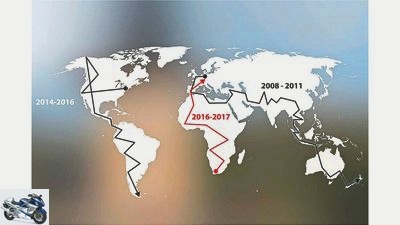
Photo: Rintz
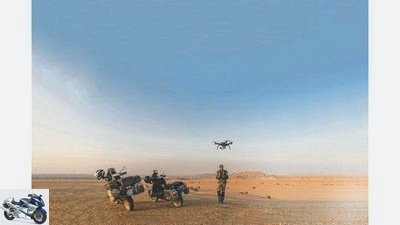



32 pictures

Josie Flohr and Daniel Rintz
1/32
The Fish River Canyon in Namibia, almost too good to be true. But on their way from South Africa to Europe, the two travelers also experienced the darker side of Africa.

Josie Flohr and Daniel Rintz
2/32
On the Congo River between Kinshasa and Brazzaville, officially impassable.

Josie Flohr and Daniel Rintz
3/32
You can’t say that Angola is touristically developed, but the message still calculates like this: Two people, 30 days – makes 500 euros for a visa.

Josie Flohr and Daniel Rintz
4/32
The Himba tribe in northern Namibia today must fight for the rights to the land that they have inhabited for centuries.

Josie Flohr and Daniel Rintz
5/32
There’s snow not only on Kilimanjaro: The Sani Pass between South Africa and Lesotho climbs to 2,873 meters.

Josie Flohr and Daniel Rintz
6/32
Large photo: Meeting on the Brandberg in Namibia.

Josie Flohr and Daniel Rintz
7/32
Long-distance traffic through Gabon in Central Africa goes over a dirt road through the jungle, there are no better roads.

Josie Flohr and Daniel Rintz
8/32
Reminder arrow: Depending on the country, left-hand and right-hand traffic alternate.

Josie Flohr and Daniel Rintz
9/32
Magical moment: gorillas in Gabon. In the reserves, too, you need luck to see the extremely rare monkeys.

Josie Flohr and Daniel Rintz
10/32
At Cape Coast Castle in Ghana. Once upon a time, slaves were shipped from here. Today the city is considered an educational center.

Josie Flohr and Daniel Rintz
11/32
World traveler Daniel Rintz: “Today I know that this was a turning point in our journey. Corruption, civil war, child soldiers. That is Africa too.”

Josie Flohr and Daniel Rintz
12/32
Travel time (Africa): one year; Distance covered (total): 100,000 kilometers.
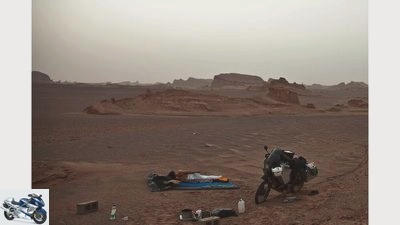
Rintz
13/32
Impressions from Daniel Rintz ‘motorcycle world tour, part 1.
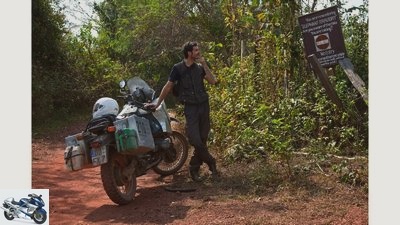
Rintz
14/32
Impressions from Daniel Rintz ‘motorcycle world tour, part 1.
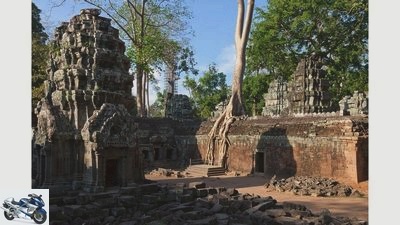
Rintz
15/32
Impressions from Daniel Rintz ‘motorcycle world tour, part 1.
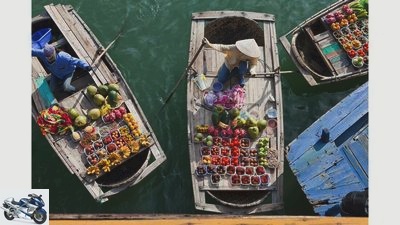
Rintz
16/32
Impressions from Daniel Rintz ‘motorcycle world tour, part 1.
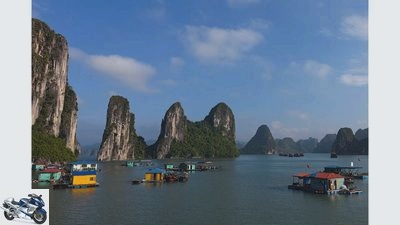
Rintz
17/32
Impressions from Daniel Rintz ‘motorcycle world tour, part 1.

Rintz
18/32
Impressions from Daniel Rintz ‘motorcycle world tour, part 1.
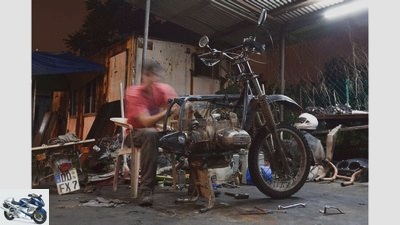
Rintz
19/32
Impressions from Daniel Rintz ‘motorcycle world tour, part 1.
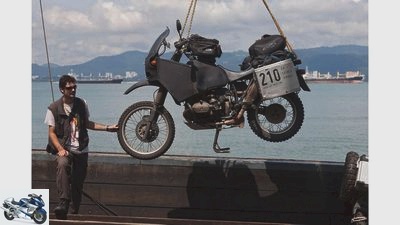
Rintz
20/32
Impressions from Daniel Rintz ‘motorcycle world tour, part 1.
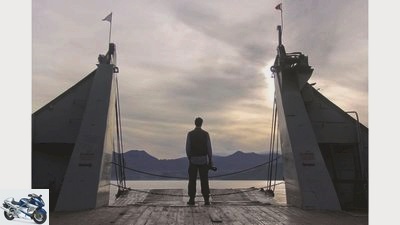
Rintz
21/32
Impressions from Daniel Rintz ‘motorcycle world tour, part 1.
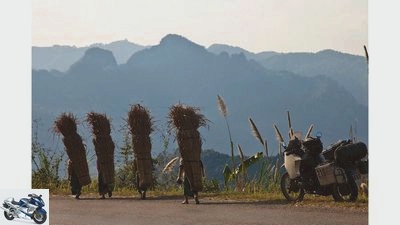
Rintz
22/32
Impressions from Daniel Rintz ‘motorcycle world tour, part 1.
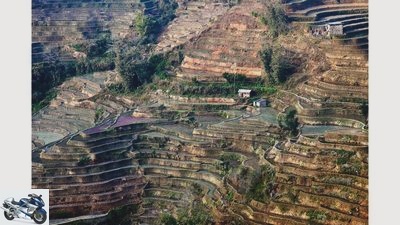
Rintz
23/32
Impressions from Daniel Rintz ‘motorcycle world tour, part 1.
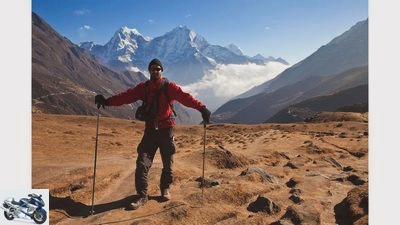
Rintz
24/32
Impressions from Daniel Rintz ‘motorcycle world tour, part 1.
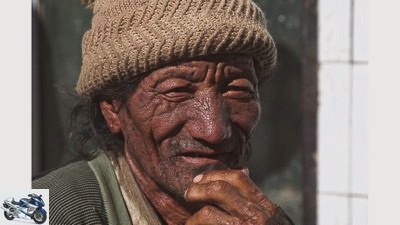
Rintz
25/32
Impressions from Daniel Rintz ‘motorcycle world tour, part 1.
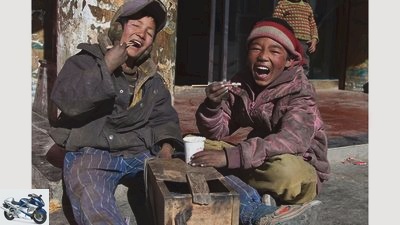
Rintz
26/32
Impressions from Daniel Rintz ‘motorcycle world tour, part 1.
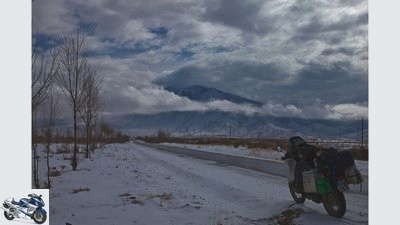
Rintz
27/32
Impressions from Daniel Rintz ‘motorcycle world tour, part 1.
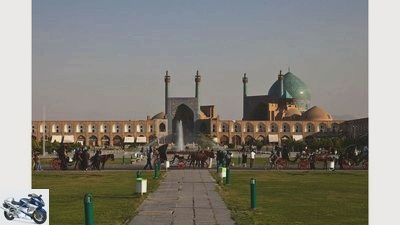
Rintz
28/32
Impressions from Daniel Rintz ‘motorcycle world tour, part 1.
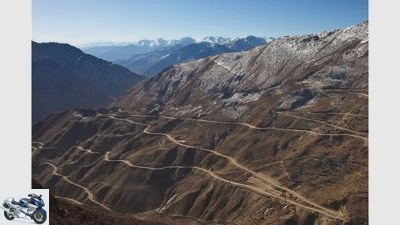
Rintz
29/32
Impressions from Daniel Rintz ‘motorcycle world tour, part 1.
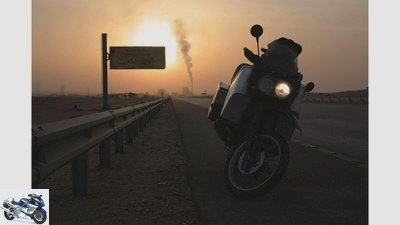
Rintz
30/32
Impressions from Daniel Rintz ‘motorcycle world tour, part 1.
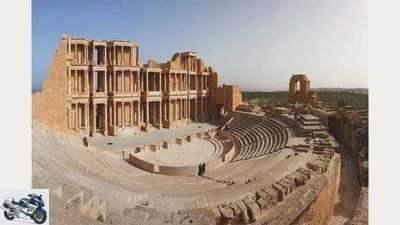
Rintz
31/32
Impressions from Daniel Rintz ‘motorcycle world tour, part 1.
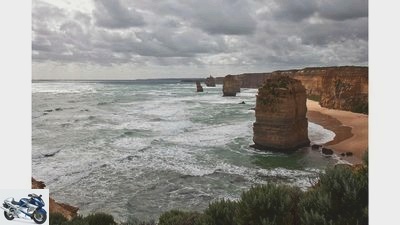
Rintz
32/32
Impressions from Daniel Rintz ‘motorcycle world tour, part 1.
to travel
Somewhere Else Tomorrow part two
Somewhere Else Tomorrow (Part 2)
Continuation of the world tour documentary planned
This is the third and last part of an extraordinary trip around the world. There is already a film about it, a second is in preparation. But it could have turned out differently. Because Africa showed the two travelers their limits.
Michael Schumann
October 16, 2017
The problems started on the third day after we entered Angola. We had just escaped the crazy traffic in the capital Luanda when Josie informed me over the intercom that her charge indicator light was flickering. I assured her that this was only due to the high humidity and that there was nothing to worry about. A white lie that neither calmed her nor relaxed me.”Just don’t stop”, kept going through my head. Because we only had two days left until we had to have our transit visas validated when leaving for the Congo.
You can’t say that Angola is touristically developed, but the message still calculates like this: Two people, 30 days – makes 500 euros for a visa. We had thankfully waived that and opted for the only alternative: five-day transit visas for 60 euros each. Disappointed that we couldn’t really explore Angola with it, we made our way through the country along the west coast of Africa. Five days, that’s 500 kilometers a day, that should be manageable, we calculated. If not, every overdone day would cost us $ 100 out of our tight travel budget. A striking alternator was not included in this bill.
We had 50 hours for 1,500 kilometers
It was unbearably humid when the headlight of Josie’s old GS finally went out and the two-valve boxer misfired. I reacted to the lack of wind like a junkie to rehab. Luckily Josie kept a cool head and calmed me down. We still had 50 hours to the Congolese border – and 1,500 kilometers. I decided to try a makeshift solution: after four sweaty hours I found a measly Chinese moped battery and two strong copper cables with eyelets on each end. I installed the small battery in Josie’s BMW. I loaded the empty one into my tank bag and clamped it to my battery with the help of the cables. I hoped to be able to charge the battery sufficiently while driving before the Chinese five-euro product gave up. Josie drove behind me with no light, but with full concentration until we made up for lost time. With a few battery changes we made it to the border in time.
Behind: corruption, civil war, child soldiers. We hadn’t heard much good news about the southern of the two Congos, the former Zaire. Most of the Congolese are struggling to survive. We had to cross the country one way or another, the only question was how. According to our research, there were two options. One: along the main street. We would face a nerve-wracking border crossing between Kinshasa and Brazzaville. The other was the route through the jungle. Crossing the border would be more relaxed, but the terrain would be more difficult. With the malady GS – in the meantime I had at least identified the diode plate as the cause, but still not been able to remove the jam myself – we decided on the main road. As we passed the border from Angola to the Democratic Republic of the Congo, we could not have suspected that the old boxer might have saved our lives as a result of the damage.
In the roundabout, those entering have the right of way …
The traffic in Kinshasa still surprised me after many years of traveling around the world. In the roundabout, those entering have the right of way. Sure, everything will be in place in no time. So do we, in perhaps the only roundabout in the Congo, which is six lanes and has five exits. Normally we could always snake our way past such chaos on our motorbikes. Not here. Everyone fought for every inch. You could regularly hear metallic scratching, engines roaring, screaming. And everything at over 40 degrees in the shade. Just without a shadow. Fortunately, a traffic cop had a heart for us foreigners. He helped us across the intersection in record time – just 20 minutes – by running in front of us and hitting bonnets with his baton wildly.
The border river that separates the Democratic Republic of the Congo in the south from the Republic of the Congo in the north is three kilometers wide between Kinshasa and Brazzaville. This is the shortest distance between two capital cities in the world. And we had to go over there. Although there has been no official way to cross the border for years. Two dozen unemployed ex-border guards greeted us in front of a large closed steel gate. Everyone wanted to be our best friend. Apparently in the hope of being able to earn a few dollars as an unofficial smuggler. We already knew this process from other borders and practiced small talk. The strategy: only after we had made most people laugh, we turned to the one who seemed least intrusive to us. In the late afternoon the steel gate was opened for us. By then I had already obtained numerous stamps, let our passports slip through many hands, served out several demands for bribes and watched one or the other officer play computer games. The boat organized for us should cost 300 euros. Room for negotiation? Zero. But our smuggler swore at his mother’s grave that there would be no more costs.
Ferry was 10 meters below
Minutes later we stood on the quay with our motorcycles and looked at a boat about eight meters long with a ferryman wearing a white, freshly ironed shirt and a captain’s hat. The only catch: the boat bobbed ten meters below us. How should we get those bikes on deck? Just throw it down? In short: The loading took a lot of imagination, another 50 euros for the six dock workers, who seemed to us the least drunk, and another two hours. During the 15-minute crossing, neither of us spoke a single word.
Brazzaville in the Republic of the Congo made a comparatively tidy and relaxed impression. That “Hippocampe” is a well-known meeting place for travelers. The restaurant and hotel is run by a French. Adventure travelers have been allowed to camp there for free in the parking lot for over a decade. For three weeks it was “Hippocampe” after all the tension on our island of peace, despite the mosquitoes and the smell of burning garbage. Here we waited for the spare part for Josie’s motorcycle. We learned that the jungle route we had previously considered for the Angola Passage led through what was then a hard-fought rebel area. Since we drove into the middle of the car without a clue, we would most likely not have survived, said one of the employees. After a second of silence we thanked Josie’s old Klepper: Dear R 80 GS, thank you for breaking …
What were we actually doing here??
Today, when I am finally back in my hometown Dresden after all these years, I know that this was a turning point on our never planned trip around the world. We set out to see exciting things, to learn new things. We didn’t feel like taking risks and exertion. But the deeper we penetrated into Central Africa, the rarer the beautiful, sometimes magical moments of travel became. The relationship between effort and reward had shifted. And it happened that had never happened before: We began to question our decision for this trip: Why were we here? What were we actually doing here? It was Josie who put an end to the brooding by saying:”I’m not leaving here until I’ve seen gorillas.”
In Gabon, a local gave us a tip. With a scribbled sketch we drove down from the main route and into the jungle. Some families of this powerful but extremely rare species of monkey should still live deep in the reserve. The paths became narrower and more muddy. We regularly got stuck with our suitcases on protruding branches. Then the rainforest thinned and we drove through deep sand. The path was too winding to pick up speed. We were too heavy to get through slowly. The clutch started to stink. Alternately, we involuntarily threw the motorcycles left or right into the waist-high grass. The afternoon sun burned our brains out, and the water in our tank bags was quickly used up. We should have turned back long ago. Finally we came to a hut with some shade. A reserve guard kindly explained to us that there had been no gorillas here for six months. We were about to collapse. And, to be honest, I really didn’t give a shit about gorillas at the moment.
A few days later we met a doctor in Franceville. He invited us to dinner and gave us further directions. This path through the jungle was a little easier. And in the end we were allowed to watch wild gorillas. Only Josie, I, and a friendly reserve employee were able to photograph a gorilla family from a small boat. Majestic, proud and also a little bit curious they presented themselves on the river bank. Only the powerful head of the family stayed in the background, but left our boat in no doubt who was the boss here. The whole thing only took a few minutes. But I will never forget her in my life.
I would love to tell you a lot more. For example from Namibia, where suddenly a herd of elephants was standing in front of our tent. Or from Botswana, where baboons stole cheese from our bread. Or how the beer tastes in Africa’s highest pub at 2,874 meters. But the MOTORRAD editor would shorten everything because it’s too long. But we will have more time for these and other stories in our next film. Josie and I are currently working on it. If you are interested, you are welcome to drop by: www.open-explorers.com
Related articles
-
Somewhere Else Together: world tour film finally on DVD
Daniel Rintz, Josy Flor to travel Somewhere Else Together: world tour film finally on DVD “Somewhere Else Together” world tour film on DVD The mishap…
-
Bikes for 999 euros and the consequences, part 7
Artist counselor Used purchase Bikes for 999 euros and the consequences, part 7 Bikes for 999 euros and the consequences, part 7 The time was good Have…
-
Motorcycle tour Panamericana part 1
Army car 27 pictures Army car 1/27 A MOTORRAD volunteer fulfills a lifelong dream: from Alaska to California on a motorcycle. Army car 2/27 Pure nature:…
-
Driving tips for the racetrack part 3
2snap 9 pictures 2snap 1/9 How can I use the road conditions for myself? After all, everyone is skiing on the same track, everyone will find the same…
-
motorcycles Alpine Masters 2011: Part 2 Alpine Masters 2011: Part 2 Sweeping Week Somewhere down there in the fog they lie, the countless hairpin bends…
-
3000 euro bikes part 1: Hyosung GT 650 S and Kawasaki ZL 900 Eliminator
mps photo studio 19th pictures mps photo studio 1/19 So the engine is at most run in. mps photo studio 2/19 The brake discs, on the other hand, are not…
-
Pascal Eckhardt’s driving tips for the racetrack part 5
archive counselor workshop Pascal Eckhardt’s driving tips for the racetrack part 5 Pascal Eckhardt’s driving tips for the racetrack Part 5 Correct…
-
Photo Pichler to travel South America, part 2 South America, part 2 Dust, storm and gravel After around 14,000 kilometers through five countries in…
-
Out and about in Lower Saxony: the fourth part of the Germany Marathon
shepherd 14th pictures shepherd 1/14 Joy curves between Weser and Harz. shepherd 2/14 Dyke walkers on the Jade Bay, healing powers on the North Sea, on a…
-
Pichler to travel South America, part 1 South America, part 1 Call of the Andes Adventure South America: Venezuela, Colombia, Equador, Peru and Bolivia…